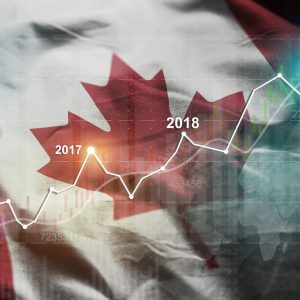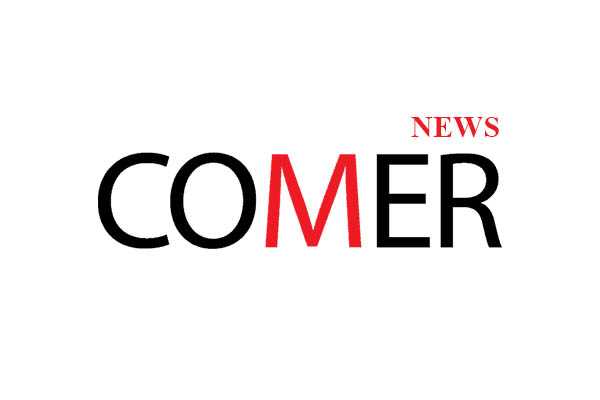The NDP leadership campaign this summer of 2017 is especially crucial. It sets the tone for the 2019 election at a time when the corporate agenda has built up alarming momentum – with the recent support of the Harper Conservatives and the present support of the Trudeau Liberals, both with majority governments. Canada is in the process of surrendering to corporate rule ever more of its precious democratic institutions, along with their public services.
Clearly the NDP understands this dangerous trend, as was apparent at a recent session of Parliament when NDP MPs eloquently opposed the Liberals’ proposed infrastructure bank which would turn over to private banks and other financial institutions, foreign as well as domestic, control of public assets in order to use them for profit. This is one of numerous public-private partnerships (PPPs), although perhaps the most egregious, which past experience has shown to be more expensive, abusive of labour, and less reliable than traditional public institutions.
Other indications of this trend include cuts and creeping privatization of our treasured public medical system, pressure to privatize CBC, and the Canada Pension Plan, and even our profitable postal service, and public liquor stores. Banks profit from student debt. Labour unions are losing ground. Taxes have been cut for the wealthy and corporations while needs of indigenous people and the poor are overlooked. The 2013 and 2016 Federal Budgets even authorize major private banks, in case they fail from their own hazardous gambling with derivatives, to take over through “bail-ins” their clients’ assets – our deposits!
Especially perilous for our democracy are so-called “free trade agreements” which come down the pipe one after another, warmly welcomed by Conservatives and Liberals alike. These are sold on the ground that they promote jobs for Canadians even though they have in the past destroyed and downgraded jobs. The trade agreements are obviously designed to promote corporate rule. They allow foreign corporations, encouraged to operate in Canada, to bypass our democratically established court system in order to sue, through tribunals set up by the trade agreements themselves, for loss of anticipated profits resulting from actions taken in the public interest by our democratically elected legislative bodies. We are already subject to such abuse of our democracy through NAFTA.
Fuelling the corporate agenda is our growing public debt burden. We are constantly told that reduction of this debt is imperative. And we are told that there are only two possibilities; either raise taxes or cut spending. Somehow the notion of raising taxes, even on the rich, remains unacceptable. So we are left with the alternative of cutting spending, bringing on the devastating austerity agenda, which leads to justification for the privatizations sought by corporations. Hence the new infrastructure bank, and such transactions as sale of 60% of highly profitable Ontario Hydro to pay down debt, leaving the Ontario government to fund unprofitable projects.
As the corporate agenda gains momentum, we are increasingly facing an emergency situation. It is becoming ever more difficult for us to reverse the drive for corporate rule supported so heartily by the other major political parties.
What is to be done? A good start for the NDP is to focus on the Liberals’ infrastructure bank, as the NDP has already done. But an additional step must be taken. The NDP, through its leadership candidates, needs to point out forcefully and repeatedly that Canada already has a superior infrastructure bank: our publicly owned Bank of Canada. Without any new legislation, the Bank of Canada could be used immediately to provide abundant, essentially interestfree funding to all levels of government for much-needed infrastructure, while freeing tax revenues for social programs.
The Bank of Canada has a great history. Between 1938 and 1974 it was used effectively to get us out of the Great Depression, through World War II, and for thirty postwar years to fund new infrastructure and social programs. But, under intense pressure behind the scenes from private banking interests, our federal government abandoned this practice, and began borrowing from private banks and other private money-lenders, incurring growing interest payments for all levels of government – recently between $50 and $60 billion per year, and at the federal level alone over $1.1 trillion in cumulative interest payments since 1974. This practice has resulted in our huge government debts, thus justifying the austerity agenda, and leading to ever growing pressures to cut funding for public services, and to privatize public resources.
Families carrying excessive debt need to practice austerity. But government finances work differently. When a government cuts jobs, it saves much less than the full amount that it was paying those jobholders. It loses the taxes they paid, and the taxes of people supported by their spending. Austerity drives the economy down. Increasing taxes, however difficult, is necessary. But the third alternative of returning to use of the Bank of Canada, almost entirely excluded from public discussion, is the only method that is sufficiently powerful to overcome our public debt burden while maintaining and improving social programs and funding infrastructure without privatization. But the advantages for the NDP and the Canadian public of returning to such use of the Bank of Canada go well beyond the prospect of overcoming the austerity agenda, and having access to money for abundant funding of public needs. Recognition of these additional advantages requires understanding of how our money system works, and how damaging it is.
In our currently prevailing money system, nearly all the money in existence, about 97%, money we all depend upon for economic transactions, has been created as computer entries by the private banks in their normal process of making loans. Contrary to public opinion, the banks do not lend out the money of depositors. When they make loans, they create new money. They require that borrowers put up valuable collateral, and then they get to create money they “lend” and require to be repaid, with interest. If borrowers fail to pay back on time both principal and interest, the banks get to take over their collateral – a power that is derived from their privilege of creating money out of nothing. What an unjust system!
But this is not all. Banks create money for the principal of their loans, but they do not create money for the interest they demand. Borrowers must compete with each other to get enough money, which has been created only as principal, in order to pay the banks both principal and interest. Meanwhile people who owe nothing are also using this same limited money supply, making it even more difficult for borrowers. It is impossible in this debt-money system for all borrowers to find enough money to make the required payments. Some will do further borrowing at further interest. But this remedy is obviously unsustainable. Inevitably those who are more vulnerable economically default, bringing a cascade of defaults resulting in recession. Mainline economists describe this as the normal business cycle. But they fail to explain that our perverse money system makes such cycles inevitable. And they fail to point out that this system is the most basic driver of inequality – an issue that the NDP has been attempting to address without tracing inequality to its most basic roots in the money system.
Strangely this chronic scarcity of money connected with our debt-money supply is a more consistent contributor to inflation than an excess of money – which is usually identified as the culprit. Businesses push to raise prices to cover their interest burdens along with other expenses, and workers do their best to push wages up to keep pace. On average about 40% of the prices of all the goods in our society results from our debt-money’s compounding interest expenses, (see www.converge.org.nz/evenz/money.pdf .), a further inflationary pressure. Moreover, the interest burden is a factor in pushing businesses to pursue unlimited and unsustainable economic growth in our finite global ecological system.
When borrowers pay off their loans the banks keep the interest as their own, but they destroy the principal. The creators of money are also its destroyers! This is an enormous additional source of power often used to public disadvantage. If all borrowers – governments, businesses, and individuals – strove to exercise the virtue of thrift by paying off their debts, long before succeeding they would have driven the economy into deep depression.
Through pervasive debt we are all in thrall to the banks – even those of us who carry no personal debt. We could gradually reverse this and all the other damaging impacts of our money system by returning to using our publicly owned Bank of Canada to provide interest-free loans and grants to all levels of government for public benefit. Further explanation is needed here.
The power to create money out of nothing is awesome. Whoever gets to benefit from the first use of newly created money gets a free benefit! The process is essentially the same as when counterfeiters print and successfully pass off cash. But they face the difficulties of devising convincing facsimiles of modern cash, and they run the risk of arrest and punishment. Commercial banks can, entirely legally, quickly create any desired quantity of money with simple computer entries. This is easier than picking money off trees! And they tell us there is no such thing as a free lunch!
Our Bank of Canada could use this same simple process to create money for public benefit, as it did in the past. It can lend money into existence – say, for investment in much-needed infrastructure, thus creating high quality jobs. At present governments borrow at interest and pay for such projects two or three times over. Interest-free loans would make it possible for them to pay for the projects just once out of tax income over the lifetime of each project – perhaps 30 to 50 years. This would free large amounts of tax revenue for current program spending.
There is another astonishing possibility. When additional new money is needed in the economy, as now, our federal government through the Bank of Canada could simply spend money into existence as a free benefit for public use. Whether governmentcreated money is lent or spent into existence, debt-free money is injected into the economy, making possible great reductions in the far-reaching problems resulting, as already explained, from our present destructive debt-money system. And our governments could have access to abundant funds for initiating creative measures for social and environmental welfare, while gradually reducing their past debts.
At the heart of the power of wealthy elites and their drive for corporate rule is their control through the banks over money creation. Gaining control through our federal government over the power to create money out of nothing for public benefit is the key to our being able to reverse the corporate agenda.
Having money-creation under government control is no panacea. Spending for human and environmental abuse, as in war, remains possible. Any campaign for monetary reform is a struggle for democratization of our money system, and such a campaign can readily be integrated with the wider struggle for greater democracy. Along with monetary reform we need to develop a high degree of public awareness regarding how our money system works. We will need procedures to assure that accurate information on the functioning of the system is publicly available, and widespread commitment to assuring that the system is benevolently and responsibly used. Strong public understanding and support are necessary to resist the intense opposition that banks, supported by Liberals and Conservatives, can be fully expected to mount against monetary reform.
Chief among the arguments and ridicule that will be brought against any NDP call for return to such use of the Bank of Canada is the claim that this would inevitably be inflationary. In response, we need to emphasize how damaging our present bank-created debt-money system itself is. It has its own long record of promoting steady, ongoing inflation, as already explained here, and as all seniors are well aware from personal experience. Moreover, there is much evidence to indicate that when governments have controlled their own money-creation they have managed their economies with very little inflation, as Canada did between 1938 and 1974. The record shows that hyperinflations, including that of Germany in the 1920s, were not driven by government irresponsibility, but by wealthy speculators, including banks, manipulating national currencies to their own great advantage (see Ellen Brown, The Web of Debt). We need to emphasize our own creative history of using the Bank of Canada with minimal inflation.
Some people even on the left think that we should not use the Bank of Canada for public funding because politicians will use its largesse irresponsibly. But do we really want to continue with our current money system which operates beyond democratic control, and is managed by institutions designed increasingly to exploit us, and subject us to debt slavery – here in Canada and beyond? Do we really want a system designed to stimulate relentless inflation, inescapable episodes of recession, unsustainable exponential economic growth in our finite environment, and rapidly increasing inequality? Do we really want private banks to monopolize creation of money for their own benefit while depriving the public of this advantage? Do we really want our governments shackled to the devastating austerity agenda? Do we really want to leave the corporations free to pursue ever more abusive corporate rule? In so far as there are risks in using the Bank of Canada, they are subject to democratic control – as our current money system definitely is not. We can establish open, democratic institutions to manage responsibly a government-created money system.
The NDP already favours public postal banking for people lacking banking services and vulnerable to abuse from loan sharks. Postal banking could also be recommended for all of us as providing a safe haven for our personal bank deposits from the threat of failing bank bail-ins. But especially crucial now, the NDP could be vigorously advocating use of the money-creation powers of the Bank of Canada for funding public services provided by our governments. A great many Canadians, including heavily indebted university graduates, are unemployed or under-employed, but eager to work for our common welfare. With abundant funding through the Bank of Canada, exciting, fulfilling opportunities for our people to find work meeting urgent unmet needs could be made available without limit. Monetary reformers have long been pointing out that anything people are capable of doing can be made financially possible.
There is another major reason for the NDP to call forcefully for massive public funding through the Bank of Canada. Large numbers of voters do not trust the NDP to manage government spending responsibly. We promise all kinds of much-desired and much-needed public services, but do not explain convincingly how we can fund them. Higher taxes on the rich are certainly necessary, and in the last election the NDP rather hesitantly suggested them. But the NDP also promised to maintain balanced budgets – which are recognized to be inseparably connected with the austerity agenda. Meanwhile the Liberals boldly announced that they would increase deficits in order to provide essential infrastructure. After its disastrous 2015 loss, the NDP needs to convince the public that there is, through the Bank of Canada, an overlooked alternative funding option much more powerful even than improved tax policies.
Legislators are generally reluctant to take bold stands without the assurance of strong public support. Perhaps this explains why the NDP, despite decades of constant prodding from monetary reformers, has not taken up this cause. But awareness of the issue and support for it has been growing. The Canadian Labour Congress at its convention this spring passed a resolution calling for return to the use of the Bank of Canada, as had already the National Farmers Union, the Council of Canadians, and the Green Party. Publicity for the COMER lawsuit against the government for failure to carry out the mandate of the Bank of Canada Act has also helped, even though the Supreme Court recently declined to hear the case. The crucial task of achieving a return to our desperately needed use of the Bank of Canada is now left to political action. The NDP, through its leadership campaign, now has the opportunity to kick-start this process.
Voters have withdrawn much of their support from a timid, cautious NDP. We now have a chance to campaign boldly, forthrightly, and courageously for the monetary reform which could jettison the austerity agenda, and harness the power of money creation to build steady momentum for public benefit.
Canada has hundreds of activist organizations, working in many ways for social justice and environmental protection, which have not yet joined the call for monetary reform. Surely they will rejoice in seeing the NDP ardently campaigning for the monetary system which can provide the funding they need for their various causes.
When an all-out NDP campaign for monetary reform evokes the opposition we can fully expect, let us welcome this as an opportunity to state our case ever more incisively to a public eager for relief from ever greater inequality and impoverishment. This 2017 NDP leadership campaign and the following campaign for the 2019 election offers us a great historic opportunity to reverse the momentum of the corporate agenda, and to move toward rescuing our democracy from corporate rule. Let us take advantage of it!
(For information and confirmation, see Joyce Nelson, Beyond Banksters, and the websites of COMER and Canadian Bank Reformers.)
In solidarity, George Crowell (member of COMER since 1994, who taught Social Ethics in the Religious Studies Department, University of Windsor, 1968-96, now living in London, Ontario.








